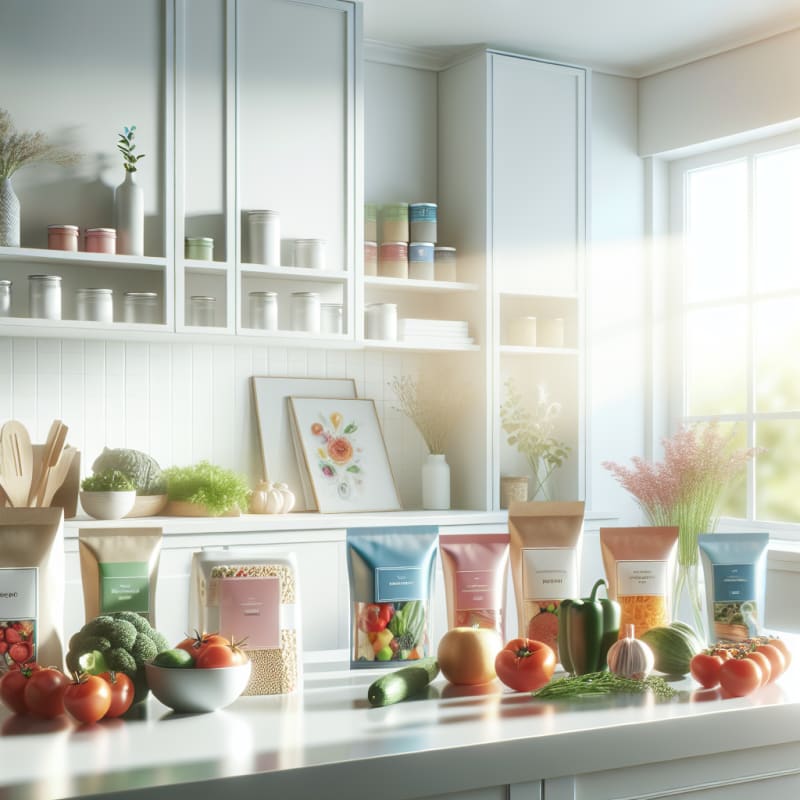How To Know If Food Contains Artificial Additives?
Category: Generic Scanners
Are you concerned about artificial additives in your food? This expert guide explains how to identify them, why it matters, and how technology like Food Scan Genius can help you shop smarter.
Introduction: Why Artificial Additives Matter
Whether you’re shopping for groceries or dining out, understanding what’s in your food is essential for your health and wellbeing. Artificial additives—including colors, flavors, and preservatives—are widely used in processed foods, but not always easy to spot. With global differences in food labeling laws and growing consumer awareness, knowing how to know if food contains artificial additives? is more important than ever.
In this article, we’ll break down what artificial additives are, how to spot them on labels, compare regulations across the US and EU, and show you how apps like Food Scan Genius make it easier to scan products for hidden ingredients.
What Are Artificial Additives?
Artificial additives are substances added to food to enhance flavor, appearance, shelf life, or texture. Unlike natural additives, these are typically synthesized in labs. Common types include:
- Artificial colors (e.g., Red 40, Yellow 5)
- Artificial flavors (e.g., vanillin, ethyl maltol)
- Preservatives (e.g., sodium benzoate, BHA, BHT)
- Sweeteners (e.g., aspartame, saccharin)
According to the FDA and EFSA, these additives are regulated, but their safety and labeling can vary by country.[1][2]
How To Spot Artificial Additives On Food Labels
The easiest way to know if food contains artificial additives is to read the ingredient list. Here’s what to look for:
| Additive Type | Common Label Names | Example Products |
|---|---|---|
| Artificial Colors | FD&C Red 40, E129, Tartrazine (E102) | Soda, candy, ice cream |
| Artificial Flavors | Artificial flavor, vanillin, ethyl vanillin | Snack foods, desserts |
| Preservatives | Sodium benzoate, potassium sorbate, BHA, BHT | Bread, processed meats |
| Sweeteners | Aspartame, sucralose, saccharin | Diet soda, sugar-free gum |
Tip: Artificial additives often appear as unfamiliar chemical names or E-numbers (in Europe). If you see a long list of ingredients you don’t recognize, there’s a good chance the food contains artificial additives.
Global Labeling Laws: US vs EU
United States (FDA)
- All food additives must be listed on the label, but terms like “artificial flavor” or “color added” are often used instead of specific names.
- The FDA oversees food labeling and additive approvals.[1]
- Some additives banned in the EU are still allowed in the US (e.g., certain food dyes).
European Union (EFSA)
- All additives must be listed by their E-number (e.g., E102 for Tartrazine).
- The EFSA enforces stricter safety reviews and bans more additives than the US.[2]
- Labels often provide more transparency about specific additives.
Why does this matter? If you travel or buy imported foods, ingredient lists and safety standards may differ. Always check labels carefully, especially if you have sensitivities or allergies.
Q&A: How Can I Tell If My Food Has Artificial Additives?
Q: What are the most common artificial additives to watch for?
A: Look for artificial colors (Red 40, Yellow 5), flavors (“artificial flavor”), preservatives (BHA, BHT, sodium benzoate), and sweeteners (aspartame, sucralose).
Q: Are artificial additives always listed by name?
A: Not always. In the US, terms like “artificial flavor” or “color added” may be used. In the EU, look for E-numbers. When in doubt, use a scanner app for more details.
Q: Are artificial additives harmful?
A: Most are considered safe in small amounts by authorities like the FDA and EFSA, but some studies link certain additives to health concerns, especially in children or sensitive individuals.[3]
Q: How can technology help me avoid artificial additives?
A: Apps like Food Scan Genius let you scan barcodes and instantly see if a product contains artificial additives, making shopping easier and safer.
Latest Research & News: Artificial Additives in the Spotlight
- FDA reviews food dye safety: The New York Times reports renewed scrutiny of food dyes and their effects on children’s behavior.[4]
- EU bans titanium dioxide: The BBC covers the EU’s ban on titanium dioxide (E171) as a food additive due to safety concerns.[5]
- Consumer demand for transparency: Food Navigator highlights how consumers are pushing brands to reduce artificial additives and improve labeling.[6]
How Food Scan Genius Empowers You
If you have food sensitivities, allergies, or simply want to eat cleaner, scanning every label can be overwhelming. Food Scan Genius simplifies this process:
- Instant barcode scanning reveals artificial additives in seconds.
- Personalized alerts for sensitivities and dietary preferences.
- Global database covers US and EU products, with real-time updates.
- Easy-to-understand results for all ages and dietary needs.
“I have a sensitivity to food dyes, and Food Scan Genius has changed the way I shop. Now I can scan products and instantly see if they contain Red 40 or other additives I want to avoid. Highly recommended!”
— Jenna L., Chicago, IL
Download Food Scan Genius today to make smarter, safer food choices.
Practical Tips: Shopping & Eating Out
- Read labels carefully: Look for chemical names, E-numbers, and vague terms like “artificial flavor.”
- Choose whole foods: Fresh fruits, vegetables, and minimally processed items are less likely to contain artificial additives.
- Ask questions: When dining out, ask staff about ingredients if you have allergies or sensitivities.
- Use scanner apps: Technology like Food Scan Genius can quickly identify hidden additives.
- Stay informed: Regulations and ingredient lists change—follow trusted sources for updates.
Summary: Making Informed Choices
Understanding how to know if food contains artificial additives? empowers you to make healthier choices for yourself and your family. By reading labels, comparing global standards, and using technology like Food Scan Genius, you can avoid unwanted ingredients and enjoy greater peace of mind.
Remember, knowledge is power. The more you know about what’s in your food, the easier it is to shop safely—whether you’re at home or abroad. Download Food Scan Genius and take control of your food choices today.
References
Frequently Asked Questions
- How can I quickly check if a product contains artificial additives?
- Use scanner apps like Food Scan Genius or check the ingredient list for chemical names and E-numbers.
- Are artificial additives safe?
- Most are considered safe by regulatory agencies, but some people may experience sensitivities or allergic reactions.
- Do labeling laws differ by country?
- Yes. The US and EU have different standards and requirements for listing additives.
- Can Food Scan Genius help with dietary restrictions?
- Yes. The app provides personalized alerts for allergies, sensitivities, and dietary preferences.





